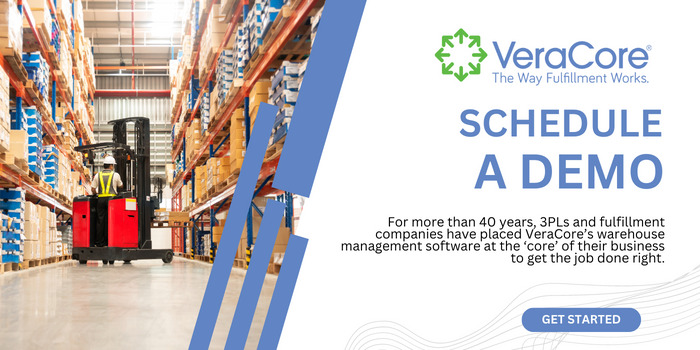In the world of third-party logistics (3PL), the ability to adapt to seasonal fluctuations is imperative for operational excellence. This requires a competent and flexible workforce during high-demand seasons.
NRF forecasts that during 2023, retail sales will grow 4%-5% over 2022 ( between $5.13 trillion and $5.23 trillion). Last year’s annual retail sales grew 7% over 2021 ($4.9 trillion). This is above the pre-pandemic average annual retail sales growth of 3.6%.
This article talks about how 3PL warehouses incorporate Warehouse Management Systems (WMS) to navigate the challenges of seasonal staffing and ensure seamless operations plus customer satisfaction.
How You Can Deal With Seasonal Workforce Demands
During high-demand periods, the surge in order volume can strain fulfillment processes and necessitate increased labor, potentially leading to sub-par customer service and escalated costs.
Here are some strategies to help your 3PL Business with Seasonal Staffing.
Understanding Seasonal Peaks
Peak seasons like holidays and promotional events are characterized by a surge in orders and shipments. Anticipating these periods and their needs can help companies prepare ahead of time by strategic planning.
Leveraging WMS for Data-Driven Forecasting
Warehouse Management Systems serve as an invaluable tool in the preparation for seasonal demands. Leveraging WMS analytics, warehouses can draw insights from previous data and market trends. This foresight allows for the development of comprehensive staffing plans and the allocation of resources with precision.
Strategic Hiring and Onboarding
To manage demands, warehouses often resort to seasonal hiring. WMS helps provide invaluable insights into labor requirements based on forecasted data.
This ensures that adequate temporary staff is recruited and integrated seamlessly into the warehouse operations through a structured onboarding process.
Facilitating Cross-Training for Versatility
Seasonal peaks demand a flexible workforce. WMS aids in cross-training employees across various functions within the warehouse.
This versatility empowers staff to handle a variety of tasks, ensuring the warehouse maintains agility during demand fluctuations.
Integrating Technology for Efficiency
The integration of WMS is indispensable in achieving efficiency during seasonal demands. WMS enables optimized labor allocation; ensuring resources are directed where they are most needed. Additionally, automated order-picking systems and robotics can significantly enhance productivity, enabling smoother operations and decreasing the need for manual labor.
Utilizing Performance Metrics for Optimization
Establishing performance metrics helps evaluate workforce productivity. WMS offers real-time monitoring of key performance indicators (KPIs), allowing managers to identify areas for improvement and make informed decisions swiftly.
Recognizing and Rewarding Outstanding Performance
Acknowledging exceptional performance largely motivates seasonal staff. WMS data can be used to track and measure individual and team achievements; which can help with rewarding accordingly. These incentives help boost morale and inspire employees to excel during trying times.
Improve Workforce Quality
A thriving workforce features top performers in the market and gradually phases out lower-performing ones. It’s crucial to have a transition plan in place at the end of each season, allowing you to convert a specific number of high-performing temporary workers into full-time positions.
Temporary employees are highly motivated and efficient, enabling them to outshine long-time employees’ performance. Offering them full-time positions at the end of their temporary contracts can help you retain market talent for the long haul.
Maintaining Transparent Communication
Clear and consistent communication helps ensure that all team members, permanent and seasonal, are aware of the warehouse’s objectives. WMS enables managers to disseminate information effectively, facilitating team meetings, updates on performance metrics, and feedback sessions. This fosters a culture of accountability and collaboration and reduces the chances of missed communication.
Collaborating with Staffing Agencies
Many 3PL warehouses partner with staffing agencies to streamline the hiring process when needed. WMS integration allows for seamless coordination between the warehouse and staffing agencies, making the recruitment process easier and more effective.
Dynamic Inventory Management with WMS
Inventory management can be challenging during peak seasons. WMS helps warehouses optimize their storage systems making high-demand items easily accessible. Additionally, dynamic replenishment strategies help maintain optimal inventory levels.
Why Choose VeraCore?
The effective management of seasonal staffing is a cornerstone of success for 3PL warehouses. With the power of Veracore’s Warehouse Management System, 3PL warehouses can employ a comprehensive approach that includes data-driven forecasting, strategic hiring, and performance optimization.
The ability to swiftly adapt to increased demands ensures operational efficiency and cements the reliability of the warehouse in the supply chain. WMS helps you do that with ease, allowing you to hold your ground in the face of dynamic market trends.


VeraCore is SaaS order and warehouse management software trusted by top fulfillment companies and 3PLs. Affordable, flexible, easy to use; VeraCore is everything you need to keep clients happy and run a lean operation.
With VeraCore, you can grow your business and handle any challenge with ease. Rules-based automation enables you to control all aspects of your warehouse operation and satisfy each of your clients’ unique requirements.
Hundreds of fulfillment service providers and 10,000+ fulfillment clients place VeraCore at the “core” of their business to get the job done right, for over 40 years.


